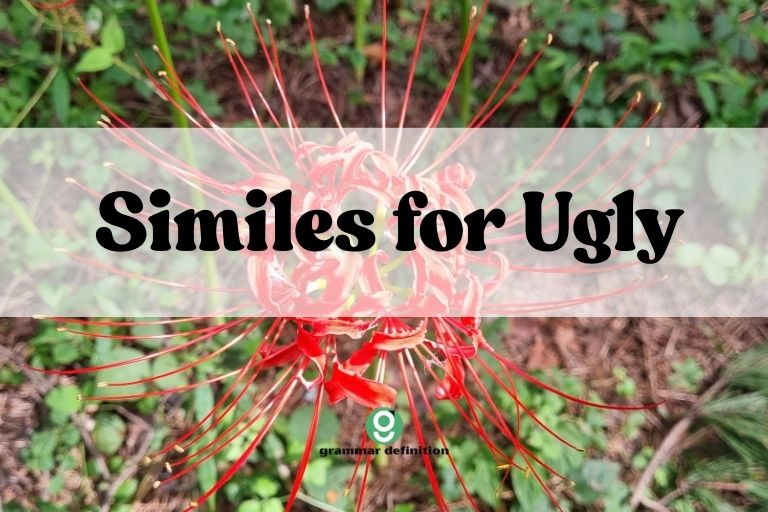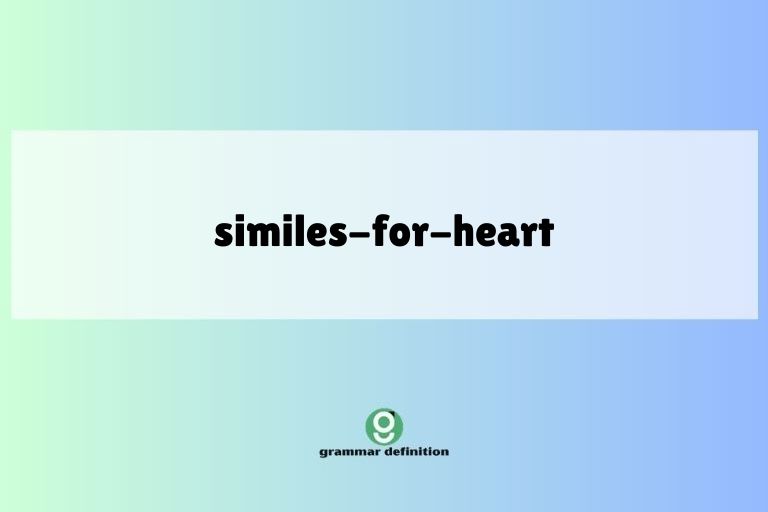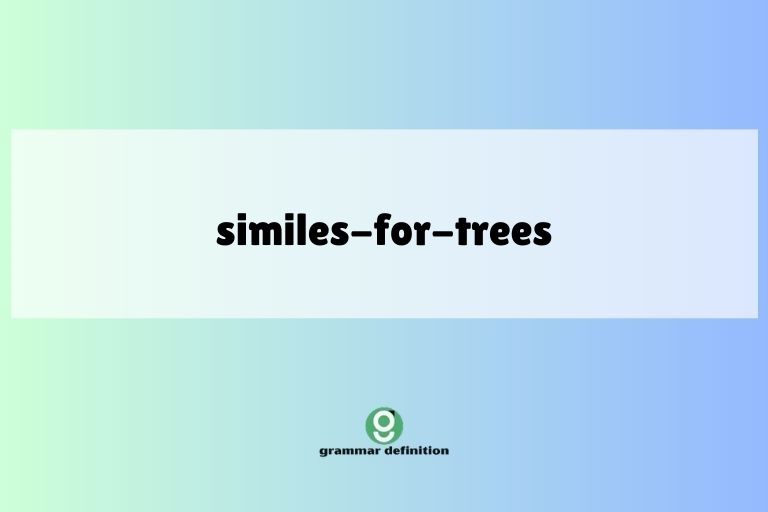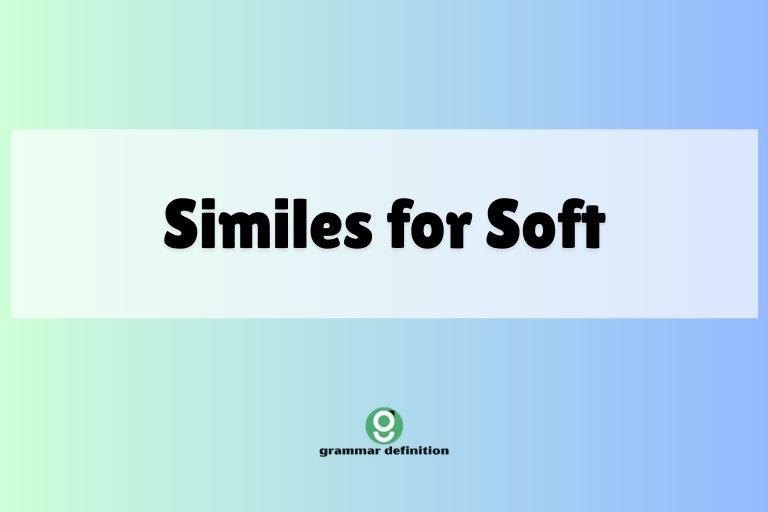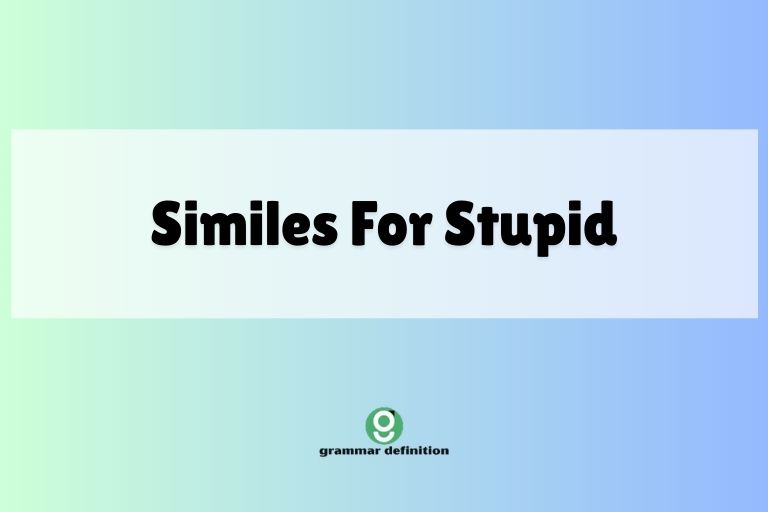Illuminating Language: Mastering Similes for Light
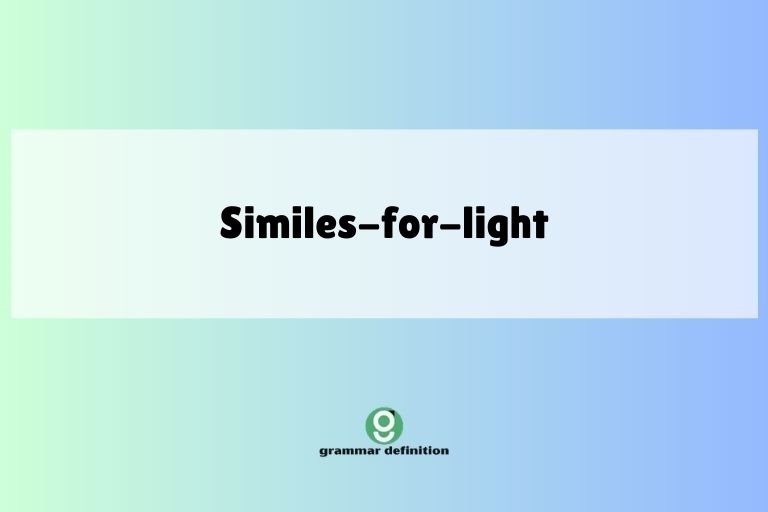
Understanding how to use similes effectively is crucial for enhancing both writing and communication. Similes, which compare two unlike things using “like” or “as,” bring vivid imagery and deeper meaning to our expressions.
Mastering similes for light enables us to describe brightness, radiance, and illumination with creativity and precision. This skill is beneficial for students, writers, and anyone looking to enrich their vocabulary and descriptive abilities.
This article will delve into the world of similes for light, providing comprehensive explanations, examples, and practice exercises to help you shine in your language skills.
Whether you’re crafting a poem, writing a story, or simply aiming to articulate your thoughts more clearly, grasping the nuances of similes for light will undoubtedly elevate your linguistic prowess. We will explore various types of light-related similes, usage rules, common mistakes to avoid, and advanced techniques for creating impactful comparisons.
By the end of this guide, you’ll be equipped with the knowledge and skills to use similes for light with confidence and creativity.
Table of Contents
- Definition of Simile
- Structural Breakdown of Similes
- Types of Light Similes
- Examples of Similes for Light
- Usage Rules for Similes
- Common Mistakes with Similes
- Practice Exercises
- Advanced Topics in Similes
- Frequently Asked Questions
- Conclusion
Definition of Simile
A simile is a figure of speech that directly compares two different things using the words “like” or “as.” The purpose of a simile is to create a vivid image in the reader’s mind by drawing a parallel between something familiar and something less known. It helps to enhance understanding and add depth to descriptions.
Similes are fundamental tools in both creative writing and everyday communication, allowing speakers and writers to convey complex ideas and emotions more effectively.
Similes are classified as a type of figurative language, distinct from metaphors, which imply a similarity without using “like” or “as.” While both similes and metaphors serve to make comparisons, similes do so explicitly, making them easier to identify and understand. The function of a simile is to illuminate a particular quality or characteristic of one thing by associating it with another.
This can be used to evoke emotions, create visual imagery, or clarify abstract concepts. The contexts in which similes can be used are virtually limitless, spanning literature, poetry, advertising, and everyday conversation.
Structural Breakdown of Similes
The basic structure of a simile consists of three key components: the subject, the linking word (“like” or “as”), and the comparison. The subject is the thing being described. The linking word establishes the comparison. The comparison is the thing to which the subject is being compared, ideally something familiar or evocative. Understanding this structure is essential for creating effective and meaningful similes.
For example, in the simile “The sun is like a giant spotlight,” the subject is “The sun,” the linking word is “like,” and the comparison is “a giant spotlight.” This structure provides a clear and direct comparison, allowing the reader to visualize the intensity and focus of the sun’s rays. By breaking down similes into these components, it becomes easier to analyze their effectiveness and construct your own.
The order of these components can sometimes be varied for stylistic effect, but the core elements remain the same. For instance, instead of saying “Her smile was as bright as the sun,” one could say, “As bright as the sun was her smile.” While the latter is less common, it still retains the fundamental structure of a simile and can be used to emphasize a particular aspect of the comparison.
Types of Light Similes
Similes for light can be categorized based on the specific aspect of light they aim to describe. These categories include brightness, dimness, color, intensity, and movement.
Each type evokes different images and feelings, allowing for a nuanced depiction of light in various contexts. Understanding these categories can help writers and speakers choose the most appropriate simile to convey their intended meaning.
Similes for Brightness
Similes for brightness are used to describe how radiant or luminous something is. These similes often compare light to naturally bright objects or sources of illumination.
They can convey a sense of clarity, energy, or joy. Consider how these similes can enhance your descriptions of sunny days, shining stars, or radiant smiles.
Similes for Dimness
Similes for dimness, conversely, describe faint or subdued light. These similes often compare light to objects that emit weak or diffused light, such as a dying ember or a distant star.
They can evoke feelings of mystery, melancholy, or tranquility. These are useful for describing twilight, shadows, or the soft glow of a candle.
Similes for Light’s Color
Similes for light’s color focus on the hue or tint of the light being described. These similes compare light to objects of a similar color, such as a golden sunset being like liquid gold or a blue neon sign being as blue as the deepest ocean.
They add richness and specificity to descriptions, allowing readers to visualize the scene more vividly. These are particularly useful when describing sunsets, neon lights, or colored reflections.
Similes for Light’s Intensity
Similes for light’s intensity describe how strong or concentrated the light is. These similes often compare light to powerful sources of energy or focused beams, such as the sun’s rays being like a laser beam or a spotlight being as intense as a supernova.
They can convey a sense of power, focus, or heat. These similes are ideal for describing searchlights, lasers, or the intense glare of the midday sun.
Similes for Light’s Movement
Similes for light’s movement describe how light travels or changes over time. These similes often compare light to things that move in a similar way, such as flickering candlelight being like a dancing flame or sunlight streaming through leaves being as fluid as water.
They add dynamism and life to descriptions, allowing readers to imagine the light in motion. These are useful for describing flickering lights, sunbeams, or the play of light on water.
Examples of Similes for Light
The following sections provide extensive examples of similes for light, organized by the categories discussed above. Each example is designed to illustrate how similes can be used to enhance descriptions and evoke vivid imagery.
By studying these examples, you can gain a better understanding of how to create your own effective similes.
Brightness Examples
This table provides examples of similes that describe the brightness of light. Each simile uses “like” or “as” to compare the light to something known for its radiance or luminosity.
| Simile | Explanation |
|---|---|
| The sun was like a giant spotlight in the sky. | Compares the sun’s intense light to a focused spotlight. |
| Her smile was as bright as the morning star. | Compares a smile’s radiance to the brilliance of the morning star. |
| The city lights shimmered like a sea of diamonds. | Compares the glittering lights to the sparkle of diamonds. |
| His eyes shone like polished silver. | Compares the brightness of his eyes to the sheen of polished silver. |
| The moon was as bright as a pearl in the night sky. | Compares the moon’s gentle glow to the luster of a pearl. |
| The lamp’s light was like a beacon in the darkness. | Compares the lamp’s guiding light to a beacon. |
| Her face glowed as bright as a newly minted coin. | Compares her face’s radiance to the shine of a new coin. |
| The stars twinkled like a million tiny suns. | Compares the stars’ twinkling to the brightness of miniature suns. |
| The fireflies glowed like miniature lanterns. | Compares the fireflies’ light to small lanterns. |
| The stage lights were as bright as a summer day. | Compares the intensity of stage lights to a sunny day. |
| The freshly fallen snow sparkled like a field of crystals. | Compares the snow’s sparkle to the brilliance of crystals. |
| The lighthouse beam cut through the fog like a sword of light. | Compares the lighthouse beam’s brightness to a sword. |
| Her laughter was as bright as a chime of bells. | Compares the cheerfulness of laughter to the sound and brightness of bells. |
| The chandelier glittered like a frozen waterfall of light. | Compares the chandelier’s glitter to a frozen waterfall. |
| The sun reflecting off the lake was like a mirror of fire. | Compares the sun’s reflection to fire. |
| The neon sign blazed as bright as a supernova. | Compares the neon sign’s brightness to a supernova. |
| The diamond ring sparkled like a captured star. | Compares the diamond ring’s sparkle to a star. |
| The morning dew on the grass glistened like scattered gems. | Compares the dew’s glimmer to scattered gems. |
| The streetlights shone like watchful eyes in the night. | Compares the streetlights’ glow to watchful eyes. |
| The birthday candles flickered as bright as tiny hopes. | Compares the candle’s flicker to tiny hopes. |
| The Christmas tree lights glowed like colorful jewels adorning a dark velvet cloth. | Compares the tree light’s glow to colorful jewels. |
| The sun glinting off the ocean waves was like a thousand winking eyes. | Compares the sun’s glint to winking eyes. |
| The bride’s dress shimmered as bright as a field of daffodils in the sun. | Compares the shimmer to daffodils. |
| The LED screen illuminated the room like a portal to another world. | Compares the screen’s illumination to another world. |
Dimness Examples
The following table features similes that describe the dimness of light. These examples compare the light to sources that are faint or subdued.
| Simile | Explanation |
|---|---|
| The candle flame flickered like a dying ember. | Compares the weak flame to a dying ember. |
| The moonlight was as dim as a whisper in the dark. | Compares the faint moonlight to a quiet whisper. |
| The streetlamp cast a light like a ghostly glow. | Compares the streetlight’s dimness to a ghostly presence. |
| Her eyes held a light as dim as a distant star. | Compares the faint light in her eyes to a faraway star. |
| The room was lit like a cave at twilight. | Compares the room’s dimness to a cave during twilight. |
| The flashlight’s beam was like a faint breath in the night. | Compares the weak beam to a faint breath. |
| The lantern’s glow was as dim as a firefly’s spark. | Compares the lantern’s faint glow to a firefly. |
| The screen’s light was like a muted whisper. | Compares the screen’s dim light to a muted whisper. |
| The hallway was lit as dimly as a forgotten dream. | Compares the hallway’s dimness to a fading dream. |
| The nightlight’s glow was like a gentle lullaby. | Compares the nightlight’s soft glow to a lullaby. |
| The old bulb cast a light as dim as a memory fading with time. | Compares the light to a fading memory. |
| The twilight deepened, the last rays of sun fading like a sigh. | Compares the fading sun rays to a sigh. |
| The dying fire emitted a glow as dim as a secret whispered in the dark. | Compares the fire’s glow to a whispered secret. |
| The moon hid behind the clouds, its light as dim as a half-forgotten thought. | Compares the hidden moon’s light to a half-forgotten thought. |
| The old lamp cast a light like a weak heartbeat in the silent room. | Compares the lamp’s light to a weak heartbeat. |
| The glow-worm emitted a light as dim as a tiny, hopeful spark. | Compares the glow-worm’s light to a hopeful spark. |
| The light filtering through the dusty window was like a blurred photograph. | Compares the filtered light to a blurred photograph. |
| The dim light in the attic felt as faint as a ghost’s touch. | Compares the attic light to a ghost’s touch. |
| The emergency exit sign glowed as dimly as a promise unfulfilled. | Compares the sign’s glow to an unfulfilled promise. |
| The distant campfire glowed like a single, lonely star in the vast darkness. | Compares the campfire’s glow to a lonely star. |
| The old television screen flickered with a light as dim as a dying star’s last gasp. | Compares the screen’s light to a dying star. |
| The light from the projector was as dim as a faded photograph from a bygone era. | Compares the projector’s light to a faded photograph. |
| The single candle in the dark room provided a light as dim as a fragile hope in despair. | Compares the candle’s light to a fragile hope. |
Color Examples
This table showcases similes that describe the color of light. They compare the light to objects that share the same hue or tint.
| Simile | Explanation |
|---|---|
| The sunset was like liquid gold. | Compares the sunset’s golden color to liquid gold. |
| The neon sign glowed as blue as the deepest ocean. | Compares the neon sign’s blue color to the ocean. |
| The streetlights cast a yellow glow like aged parchment. | Compares the streetlight’s yellow color to old parchment. |
| The stained glass window shone as red as ruby wine. | Compares the stained glass’s red color to ruby wine. |
| The aurora borealis shimmered like green emeralds in the sky. | Compares the aurora’s green color to emeralds. |
| The stage lights bathed the actors in a pink glow like cotton candy. | Compares the stage light’s pink color to cotton candy. |
| The sunrise painted the sky as orange as a ripe tangerine. | Compares the sunrise’s orange color to a tangerine. |
| The fire’s light danced like flames of crimson velvet. | Compares the fire’s red color to crimson velvet. |
| The laser pointer emitted a green beam as sharp as a lime. | Compares the laser’s green color to a lime. |
| The disco ball reflected light like a mosaic of silver mirrors. | Compares the disco ball’s silver light to mirrors. |
| The fireflies blinked with a light as green as a summer meadow after a rain. | Compares the fireflies’ light to a summer meadow. |
| The lava glowed as red as the heart of a volcano. | Compares the lava’s color to the heart of a volcano. |
| The deep-sea fish emitted a light as blue as the abyss itself. | Compares the fish’s light to the abyss. |
| The amethyst crystal glowed as purple as a twilight sky. | Compares the crystal’s glow to a twilight sky. |
| The lantern cast a light as yellow as the yolk of a sun-kissed egg. | Compares the lantern’s light to an egg yolk. |
| The oil slick shimmered with colors like a rainbow trapped in a puddle. | Compares the oil slick’s colors to a rainbow. |
| The jellyfish pulsed with a light as translucent as sea glass. | Compares the jellyfish’s light to sea glass. |
| The fairy lights twinkled with colors as varied as a box of crayons. | Compares the fairy lights’ colors to crayons. |
| The traffic lights changed colors like a chameleon shifting its skin. | Compares the traffic lights’ colors to a chameleon. |
| The sunset over the fields painted the clouds as pink as flamingo feathers. | Compares the sunset’s color to flamingo feathers. |
| The aurora danced across the sky, its hues as iridescent as a hummingbird’s wing. | Compares the hues to a hummingbird’s wing. |
| The colored spotlights transformed the building, making it as vibrant as a peacock’s display. | Compares the spotlights to a peacock’s display. |
| The fire in the hearth glowed as orange as the embers of a dying passion. | Compares the fire’s glow to dying passion. |
Intensity Examples
The following table provides similes focused on describing the intensity of light. These examples often associate light with powerful or concentrated sources.
| Simile | Explanation |
|---|---|
| The sun’s rays were like a laser beam, burning through the clouds. | Compares the intensity of the sun to a laser beam. |
| The spotlight was as intense as a supernova, blinding anyone who looked directly at it. | Compares the spotlight’s intensity to a supernova. |
| The welding torch emitted a light like a miniature sun, searing the metal. | Compares the welding torch’s light to a miniature sun. |
| Her gaze was as intense as a magnifying glass focusing the sun’s rays, making him uneasy. | Compares her intense gaze to a magnifying glass focusing sunlight. |
| The stadium lights were like a wall of heat, pushing down on the performers. | Compares the stadium lights’ intensity to a wall of heat. |
| The searchlight cut through the fog like a knife, its beam as focused as a surgeon’s scalpel. | Compares the searchlight’s beam to a surgeon’s scalpel. |
| The bonfire blazed with an intensity like a furnace, radiating heat for yards around. | Compares the bonfire’s intensity to a furnace. |
| The projector’s light was as sharp as a tack, revealing every detail on the screen. | Compares the projector’s light to a sharp tack. |
| The camera flash was like a lightning strike, freezing the moment in time. | Compares the camera flash to a lightning strike. |
| The lighthouse beam swept across the sea with an intensity as unwavering as a mother’s love. | Compares the lighthouse beam’s intensity to a mother’s love. |
| The sun reflecting off the snow was as blinding as staring directly at an arc welder. | Compares the sun’s reflection to an arc welder. |
| The streetlights shone with an intensity like the glare of a thousand eyes. | Compares the streetlights’ intensity to the glare of eyes. |
| The emergency flares burned as brightly as a distress call from a distant planet. | Compares the flares’ brightness to a distress call. |
| The tanning bed lamps glowed with an intensity like the heat of a desert sun at midday. | Compares the tanning bed lamps’ intensity to the desert sun. |
| The strobe lights pulsed with an intensity as disorienting as a sudden earthquake. | Compares the strobe lights’ intensity to an earthquake. |
| The artist’s spotlight focused on the canvas with an intensity like a laser targeting its mark. | Compares the spotlight’s focus to a laser target. |
| The interrogation lamp glared with an intensity as unforgiving as a judge’s verdict. | Compares the lamp’s glare to a judge’s verdict. |
| The headlights of the oncoming car were like twin suns, searing his vision. | Compares the headlights to twin suns. |
| The explosion lit up the night sky with an intensity as devastating as a nuclear blast. | Compares the explosion’s intensity to a nuclear blast. |
| The dentist’s light shone with an intensity as invasive as a probing question. | Compares the dentist’s light to a probing question. |
| The lava flow advanced with an intensity like the wrath of an ancient god. | Compares the lava flow to the wrath of a god. |
| The jeweler’s loupe magnified the diamond, revealing its brilliance with an intensity like a hidden galaxy. | Compares the diamond’s brilliance to a galaxy. |
| The athlete’s focus was as intense as a beam of pure energy, directed solely at the finish line. | Compares the athlete’s focus to a beam of energy. |
Movement Examples
This table provides similes that describe the movement of light. These examples often compare light to things that move in a similar way or have dynamic qualities.
| Simile | Explanation |
|---|---|
| The flickering candlelight was like a dancing flame, swaying gently in the breeze. | Compares the candlelight’s flicker to a dancing flame. |
| The sunlight streaming through the leaves was as fluid as water, rippling across the forest floor. | Compares the sunlight’s movement to flowing water. |
| The laser show danced across the building facades like a swarm of electric butterflies. | Compares the laser show’s movement to electric butterflies. |
| The aurora borealis flowed across the sky like a river of light, changing colors as it moved. | Compares the aurora’s flow to a river of light. |
| The lightning flashed like a jagged whip, cracking across the stormy sky. | Compares the lightning’s flash to a jagged whip. |
| The spotlight followed the dancer like a loyal shadow, highlighting every move. | Compares the spotlight’s movement to a loyal shadow. |
| The fireflies blinked on and off like a Morse code message, signaling through the night. | Compares the fireflies’ blinking to a Morse code message. |
| The projector’s beam shifted and swirled like a kaleidoscope, creating mesmerizing patterns. | Compares the projector’s beam to a kaleidoscope. |
| The sunbeams pierced through the clouds like golden arrows, striking the earth below. | Compares the sunbeams to golden arrows. |
| The neon sign pulsed like a heartbeat, drawing attention to the storefront. | Compares the neon sign’s pulse to a heartbeat. |
| The moonlight shimmered on the water like a thousand silver coins scattered by a playful hand. | Compares the moonlight’s shimmer to scattered coins. |
| The shadows danced in the corners of the room like mischievous spirits, playing tricks on the eye. | Compares the shadows’ movement to mischievous spirits. |
| The traffic lights changed colors like a performer executing a carefully choreographed routine. | Compares the traffic lights’ changes to a choreographed routine. |
| The firelight flickered and swayed like a hypnotist’s pendulum, drawing everyone into its spell. | Compares the firelight’s flicker to a hypnotist’s pendulum. |
| The light from the lighthouse swept across the ocean like a searching finger, guiding ships safely to shore. | Compares the lighthouse light to a searching finger. |
| The laser pointer zipped across the presentation screen like a caffeinated hummingbird, highlighting key points. | Compares the laser pointer’s movement to a hummingbird. |
| The disco ball spun and scattered light like a shower of glittering confetti, filling the dance floor with energy. | Compares the disco ball’s scattering to confetti. |
| The Christmas lights twinkled on the tree like a chorus of whispering stars, sharing secrets and cheer. | Compares the Christmas lights’ twinkle to whispering stars. |
| The sun’s rays reached through the canopy like exploring fingers, seeking out patches of open ground. | Compares the sun’s rays to exploring fingers. |
| The streetlights blinked on in sequence like a line of dominoes falling in slow motion, gradually illuminating the avenue. | Compares the streetlights’ blinking to dominoes. |
| The fireflies in the meadow danced like celestial ballerinas, their lights tracing ethereal patterns in the air. | Compares the fireflies to ballerinas. |
| The camera’s flash illuminated the scene like a sudden revelation, capturing a fleeting moment in stark detail. | Compares the camera’s flash to a revelation. |
| The candle flame wavered like a nervous thought, flickering uncertainly in the silence of the room. | Compares the candle flame to a nervous thought. |
Usage Rules for Similes
When using similes, it’s important to ensure that the comparison is both logical and effective. The two things being compared should share a common characteristic that is relevant to the description.
Avoid comparisons that are too abstract or obscure, as they may confuse the reader rather than clarify the meaning. It is also important to ensure that the simile enhances the imagery and does not detract from the overall message.
One common mistake is using clichéd similes, which are overused and lack originality. Instead of saying “as bright as the sun,” try to find a more unique and evocative comparison, such as “as bright as a supernova.” Another rule is to maintain consistency within the simile.
If you are describing the intensity of light, make sure the comparison also relates to intensity. For example, comparing the sun to a gentle breeze would be illogical and ineffective.
Context plays a crucial role in the effectiveness of a simile. Consider the tone and style of your writing when choosing a simile.
A formal essay may require more sophisticated and nuanced comparisons, while a casual conversation may allow for simpler and more direct similes. Always aim to create a simile that is both accurate and engaging, enhancing the reader’s understanding and appreciation of your description.
Common Mistakes with Similes
Several common mistakes can undermine the effectiveness of similes. One frequent error is using similes that are too generic or clichéd.
These overused comparisons fail to create a fresh or impactful image. Another mistake is creating illogical comparisons, where the connection between the two things being compared is weak or nonexistent.
This can lead to confusion and detract from the overall clarity of the writing.
Incorrect: The light was like a tree. (Illogical comparison)
Correct: The light was like a beacon, guiding lost sailors.
Another common error is mixing metaphors and similes, which can result in inconsistent and confusing imagery. It’s essential to maintain a clear distinction between the two figures of speech.
A metaphor implies a similarity, while a simile explicitly states it using “like” or “as.”
Incorrect: The light was a river, as bright as the sun. (Mixing metaphor and simile)
Correct: The light was like a river of gold, flowing through the valley.
Finally, overuse of similes can also weaken their impact. While similes can be powerful tools, they should be used sparingly and strategically to enhance specific descriptions.
Too many similes can make the writing feel cluttered and overwhelming.
Incorrect: The light was like a star, as bright as a diamond, like a beacon, as intense as fire. (Overuse of similes)
Correct: The light was like a star, piercing the darkness with its intense brilliance.
Practice Exercises
These practice exercises are designed to help you improve your understanding and use of similes for light. Each exercise focuses on a different aspect of simile construction and usage.
Be sure to review the explanations and examples provided earlier in this article before attempting these exercises.
Exercise 1: Identifying Similes
Identify the similes in the following sentences. Underline the simile and identify the two things being compared.
| Question | Answer |
|---|---|
| 1. The moon was as round as a silver coin. | as round as a silver coin; Moon and silver coin |
| 2. The flashlight beam was like a sword of light. | like a sword of light; Flashlight beam and sword |
| 3. Her eyes shone like distant stars. | like distant stars; Her eyes and distant stars |
| 4. The neon sign glowed as bright as fire. | as bright as fire; Neon sign and fire |
| 5. The sunrise was like a painting in the sky. | like a painting in the sky; Sunrise and painting |
| 6. The candles flickered like sleeping stars. | like sleeping stars; Candles and sleeping stars |
| 7. The lamp’s light was as warm as sunshine. | as warm as sunshine; Lamp’s light and sunshine |
| 8. The fireflies glowed like tiny lanterns. | like tiny lanterns; Fireflies and tiny lanterns |
| 9. The disco ball scattered light like a shower of diamonds. | like a shower of diamonds; Disco ball light and shower of diamonds |
| 10. The streetlights stood like silent sentinels. | like silent sentinels; Streetlights and silent sentinels |
Exercise 2: Completing Similes
Complete the following similes by
filling in the missing comparison. Try to be creative and descriptive.
- The sun was as bright as __________.
- The moonlight was like __________.
- Her smile shone like __________.
- The lamp’s glow was as warm as __________.
- The lightning flashed like __________.
Exercise 3: Creating Similes
Write your own similes for the following prompts. Focus on using vivid language and creating a clear comparison.
- Describe the light of a candle.
- Describe the light of a full moon.
- Describe the light of a distant star.
- Describe the light of a neon sign.
- Describe the light of a sunrise.
Advanced Topics in Similes
Once you have mastered the basics of simile construction, you can explore more advanced techniques to enhance your writing. One such technique is using extended similes, where the comparison is developed over several sentences or even paragraphs.
This allows for a more detailed and nuanced exploration of the similarities between the two things being compared. Another advanced topic is the use of multiple similes in a single passage to create a rich tapestry of imagery.
Furthermore, consider experimenting with unconventional comparisons. Instead of always comparing light to other sources of light, try comparing it to abstract concepts or emotions.
For example, you might say that “the light felt like hope” or “the darkness was as heavy as despair.” These types of similes can add depth and complexity to your writing, evoking a stronger emotional response in the reader. Pay attention to how professional authors use similes in their works.
Analyze their techniques and try to incorporate them into your own writing.
Finally, remember that the best similes are those that are both original and meaningful. Strive to create comparisons that are fresh and insightful, adding a unique perspective to your descriptions.
By continually practicing and refining your skills, you can elevate your writing to a new level of artistry.
Frequently Asked Questions
-
What is the difference between a simile and a metaphor?
- A simile is a comparison using “like” or “as,” while a metaphor implies a comparison without using those words. For example, “The sun is like a spotlight” is a simile, while “The sun is a spotlight” is a metaphor.
-
How can I avoid using clichéd similes?
- Try to think of unique and original comparisons that are not commonly used. Brainstorm different aspects of the thing you are describing and look for less obvious similarities.
-
Can I use similes in formal writing?
- Yes, but use them sparingly and choose similes that are appropriate for the tone and style of the writing. Avoid overly casual or informal comparisons.
-
How many similes should I use in a piece of writing?
- There is no set rule, but it’s best to use similes judiciously. Overusing them can make your writing feel cluttered and less impactful.
-
What if I can’t think of a good simile?
- Don’t force it. Sometimes it’s better to describe something directly rather than using a weak or ineffective simile. Come back to it later and try again when you have fresh ideas.
Conclusion
Mastering the use of similes for light can significantly enhance your descriptive writing and communication skills. By understanding the structure, types, and usage rules of similes, you can create vivid and engaging imagery that captivates your audience.
Remember to avoid common mistakes, practice regularly, and explore advanced techniques to continually improve your skills. Whether you’re a student, writer, or simply someone who appreciates the beauty of language, the ability to craft effective similes will undoubtedly enrich your expressive abilities.

